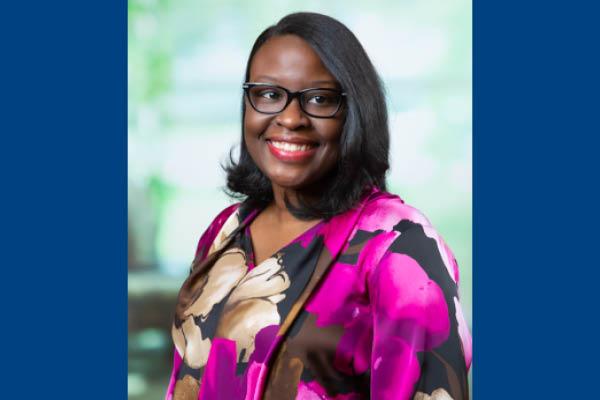
Duke’s Cognitive Neuroscience Admitting Program (CNAP) is set to welcome its first speech-language pathologist as a doctoral student. Shanika Phillips Fullwood, a clinically certified SLP with over a decade of experience, will begin her studies in the fall of 2024.
Her enrollment reflects a promising shift toward innovative, interdisciplinary approaches in brain and language research.
Phillips Fullwood works at Moses Cone Memorial Hospital in Greensboro, treating adult patients who have neurogenic disorders, associated with stroke, traumatic brain injury, and spinal cord injury. She serves as the acute rehab neuroscience diagnostic specialist, a role that involves coordinating with physical therapists, occupational therapists, and SLPs to ensure the use of evidence-based practices.
In addition to her clinical work, she is an adjunct lecturer at her alma mater, Brooklyn College, CUNY, and she contributes to research on neurogenic communication disorders in the lab of Jamila Minga, PhD, CCC-SLP. Phillips Fullwood’s work in the lab includes training undergraduates in transcription checks for the Right-Hemisphere Brain Damage (RHD) Bank and participating in brain mapping studies to identify regions associated with specific deficits.
She’s also co-authoring manuscripts focused on the impact of culture on communication and the development of a diagnostic code for apragmatism, work that aligns with her research interests.
As a doctoral student, Phillips Fullwood plans to focus on the cognitive aspects of communication, particularly how right-hemisphere strokes affect language and communication abilities. Her interest in this area developed during her time as an SLP in Indiana, where she encountered a number of patients with right-hemisphere strokes who had trouble with communication.
These patients struggled to stay on topic and understand questions, even though their language center – which is typically associated with the left hemisphere – was not affected.
“I would bring up these concerns during our interdisciplinary team meetings to the physical medicine doctor, and the response often was, ‘Well, they didn't have a left-hemisphere stroke, they had a right-hemisphere stroke, so they shouldn't have communication difficulties,’” she said.
This led her to delve deeper into the research to understand whether these kinds of communication deficits have been documented in the literature.
“There was some evidence supporting that, but still, there's a bias toward the left hemisphere being the only hemisphere that's responsible for communication,” she said. “I thought, ‘Well, it's time for me to go back and do my PhD,’ which was always my goal.”
Known for its interdisciplinary approach, CNAP provides students with the opportunity to engage with faculty across multiple departments and fields at Duke, such as neurobiology, psychology, psychiatry, biomedical engineering, and philosophy.
Students undergo 18 months of coursework and laboratory rotations, gaining foundational knowledge in cognitive neuroscience. After that, they select a department and two advisors to guide their thesis research, furthering their specific interests through an affiliate graduate program or department.
“The fact that CNAP is so interdisciplinary was really attractive to me,” Phillips Fullwood said. “I felt that this program would serve me a lot better than a PhD in communication sciences because I'll be able to tap into some of the techniques they're using in neuroscience to get a better understanding of the communication piece.”
Her enrollment in CNAP demonstrates the interdisciplinary approach necessary for advancing the field of cognitive neuroscience. It also highlights the opportunity to integrate speech-language pathology into Duke's broader research and academic offerings. Currently, the school does not offer a training program for communication sciences and disorders at the master’s or doctoral level.
Through her work, Phillips Fullwood hopes to help bridge the gap between clinical speech-language pathology and cognitive neuroscience in treating patients with right-hemisphere strokes who have communication deficits.
“I believe that we must have a good understanding of why this patient is doing what they're doing to inform how we evaluate and treat them,” she said. “If we improve this piece, then we'll be able to help translate that into better diagnostic tools, better assessment methods, and better, more formal ways for treating this than we currently have.”